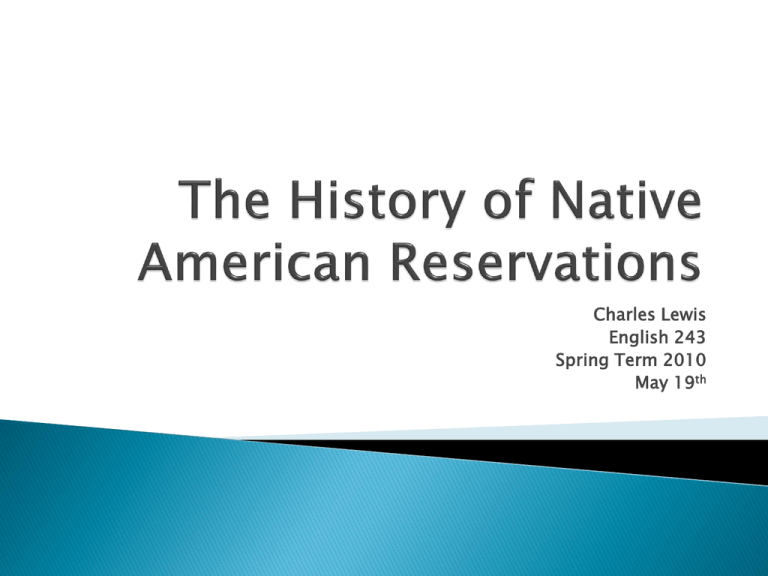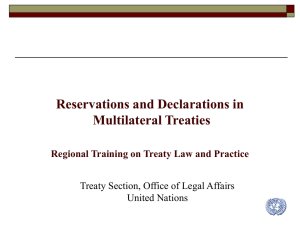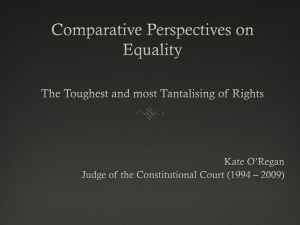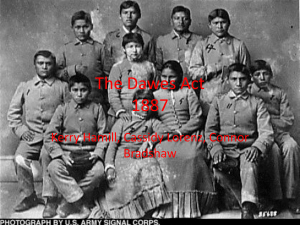Native American Reservation History
advertisement

Charles Lewis English 243 Spring Term 2010 May 19th A Native American reservation is an area of land managed by a Native American Tribe under the United States Department of the Interior’s Bureau of Indian Affairs. There are about 310 Native American Reservations in the United States, This means not all tribes have a reservation. There are over 550 recognized tribes in the United states, some have more than one reservation while many don’t have a reservation. There are many reasons reservations were created. Among the many reasons some are 1) An exploding population of EuroAmerican immigrants. 2) Increased conflict between the immigrants and the native peoples. 3) The ability to push the growing country’s economy through agriculture. 4) The ability to force religion especially individual forms of Christianity on the native people, in an attempt to get the native people to abandon previous ways of life. 5) To control the natives, convert them, and manipulate them for the better of the country. In 1851, the United States Congress passed the Native American Appropriations Act which authorized the creation of Native American reservations in modern day Oklahoma. By the late 1860’s President Ulysses S. Grant created a “peace policy.” The policy was meant to be a solution to the conflicts between Euro-Americans and, Native Americans. Another goal of the of the “peace Policy” was to relocate the Native people to parcels of land that was intentionally set aside for that reason. The government officials were then replaced and the reservations were ran by religious men specifically Quakers. The religious men were meant to civilize the Natives and make them adapt to the new way of life. At times the Natives on the reservations were bargained with stipends to work for the church, and for the government. As we read in Life Among the Piutes , the stipends were often not delivered. The reservations were generally created through and Executive Order, although the reservations would not be recognized as official unless approved by congress Because the peace policy created most reservations through Executive orders, it immediately caused a controversy. The executive orders that created reservations but did not make them official allowed the government to dictate various factors of the reservations without any chance of Legal consequences. It allowed the standards of the reservations to be horrible. Most tribes ignored the relocating orders of the United States government, and then were forced by the United States Army. The Army also restrictd the movement of the Tribes. The force used by the government caused some of the most famous Native American Wars in history. Among many wars some of these were the Sioux War, the Battle of Little Bighorn, and the Nez perce war. The policy was considered to be a failure, it had caused more controversy, and wars than previous to it’s installment. The policy was phased out by 1877 by President Rutherford B Hayes. By 1882 all religious organizations had been removed from positions of power in the reservations. In 1887 congress implemented the Dawes Act. The Dawes Act called for tribally owned lands to become individually owned properties. The act opened up the lands to EuroAmerican immigrants for settlement. The act Allowed for industrialization, especially that of agriculture and railroads. Another example of the economy and the growth of a country being the deciding factor. The Howard-Wheeler Act was put into play in 1934 The Howard-Wheeler Act reversed the individualization of lands brought on by the Dawes Act. The act increased tribal sovereignty, and reversed many privatizations. The act was initiated by John Collier The act enabled the United States government to invest health care, schools, and other infrastructure on the reservations. Although all the above was sub-par compared to the infastructures of nonreservation lands. There was an attempt to end the program and it was taking affect, although it was reversed. The attempt to end the program was headed by some members of congress and the new leaders of the Native American commission. If the program was ended the government would be relinquished of any responsibilities to the Natives. Before the act was fully terminated some Natives lost their land, but after the rejection of the termination they were compensated. Of the 300 plus reservations in the United States today there are a few common distinctions. Most reservation life is comparable to a third world country. In most reservations alcoholism is an epidemic, and is yet to be addressed by the government, or anyone else. Child abuse is also an epidemic in many Native American reservations. Drug abuse, and a lack of solid education or also deciding factors that plague most Native American reservations. All Native American reservations today are largely ignored by the federal Government, and by the citizens of the United States. If the Natives who live on the reservations are going to see any improvement in their lives, it is going to be by a team effort. Burns Piute Indian Colony- Harney County Coos Lower Umpqua and Siuslaw reservationFlorence Coquille Reservation- Coquille Grande Ronde Community Reservation- Polk County Siletz Reservation- Siletz Umatilla Reservation- Umatilla county, Union county Warm Springs Reservation- Wasco, Jefferson, Marion, Clackamas, and Linn Counties. Klamath Reservation- Klamath Falls. Many of the Reservations in Oregon fit the prototypical stereotype of all reservations. Many suffer from the same type of dysfunctions, and are yet to see any outside help. The End http://en.wikipedia.org/wiki/Indian_reservati on http://www.accessgenealogy.com/native/trib es/reservations/rezhistory.htm http://www.answers.com/topic/indianreservation-2 http://en.wikipedia.org/wiki/List_of_Indian_r eservations_in_Oregon 500nations.com/Oregon_Tribes.asp There are many Acts I did not mention due to time constraints, and the complexity of the situations. An entire course could be taught on the History of Native American Reservations I also did not venture into the small legal aspects of Native American Reservations I did understand, once again due to time and complexity.











